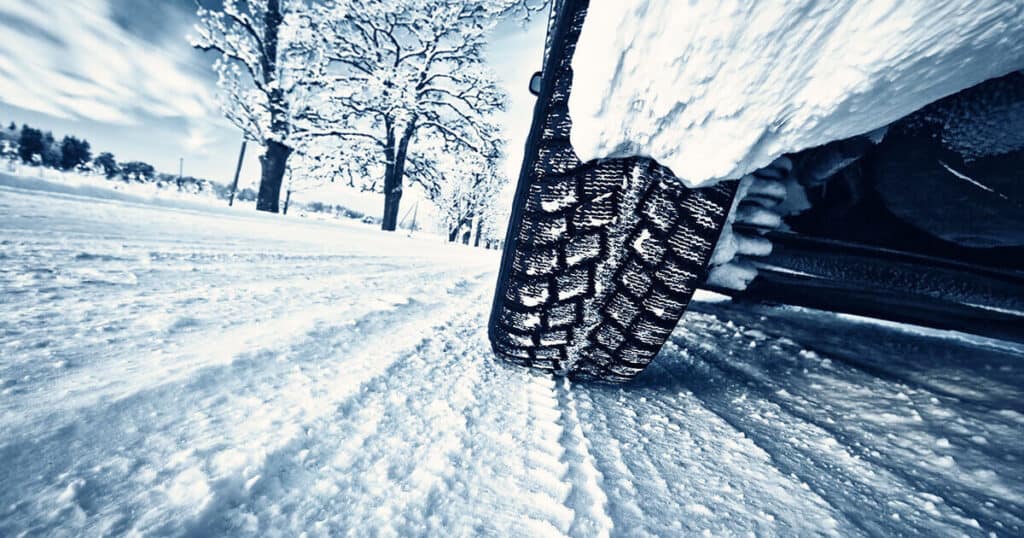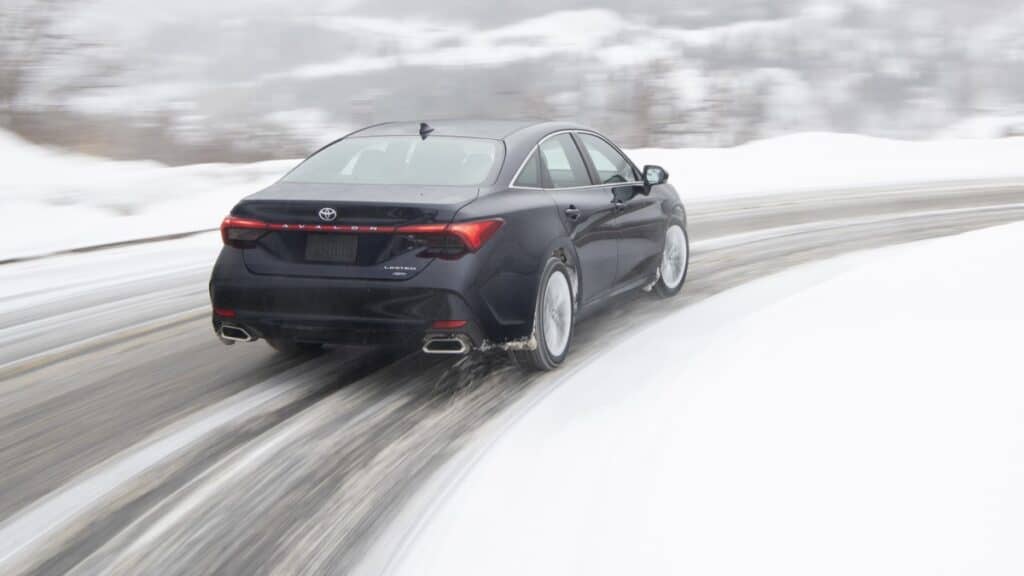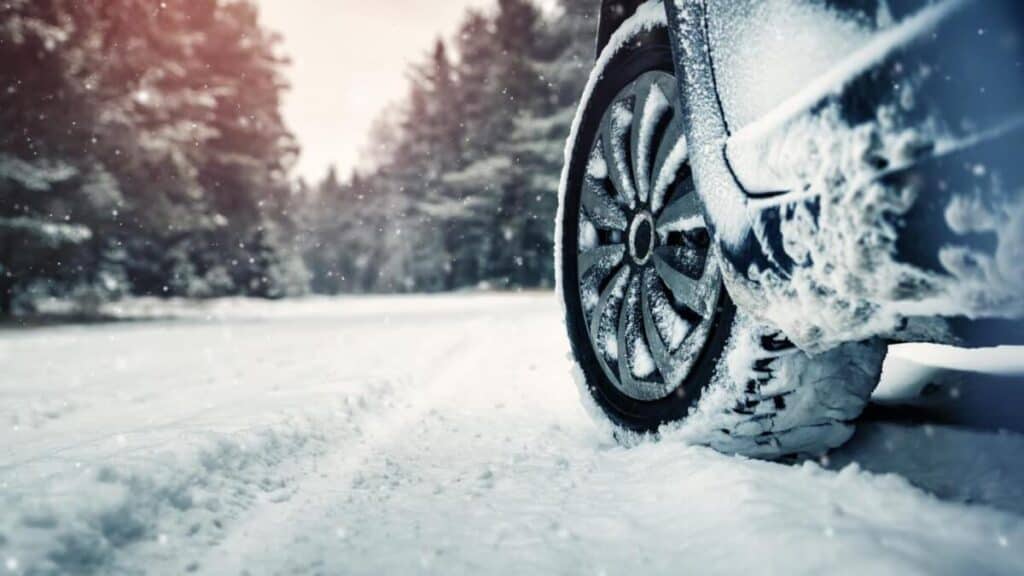Whether it’s an all-day snowboarding adventure or a glimpse of the season’s breathtaking landscapes, winter can be the perfect time to explore everything outdoor. However, with snow, sleet and ice on the road, the winter season can be a nightmare for drivers. The last thing you want is to veer off an icy road. Thanks to poor visibility and freezing cold temperatures, mishaps are something to worry about when driving on a winter day. Which is why its ideal to get familiar with your braking system before hitting the road. The following tips should get you started.

1. Slow down gently
Whether it’s at a stop sign, intersection or sharp bends, bringing your car to a slow stop is important. This will ensure you have plenty of time to monitor movement, and thus protect your car from skidding past signs or rear-ending the car in front.
2. Electronic Stability Control (ESC)
The ESC is a safety feature that monitors your car’s position and prevents you from veering off the road. Once this sensor detects that your car not moving correctly, it does one or both of two things: trigger the braking system or minimize the engine. In either case, this reduces speed and allows you to better control your car. However, since the ESC functionality is not available in all cars, buying a new car or a used one with the sensor is worth the investment for safe winter driving.
3. Be careful not to slam your brakes
The danger of this is pretty obvious. On an icy, slippery road, slamming hard on your brakes could put you in trouble, causing your car to skid uncontrollably. To prevent this, a good practice would to gradually slow down the accelerator. This way, you’re able to control your car and move at desired pace.
4. Reduce driving speed
The condition is never right to move at blistering speeds during winter. This increases your risk of skidding past turns and minimizes control when you need to make quick decisions. You want to be on the guard and protect your car from unpredictable road conditions of winter, and reducing your driving speed is a good first step.
5. Don’t drive too close
Keeping a safe distance is always important, and even more so when driving on icy roads. You ideally want to be approximately 10 seconds behind the next car in front. Your safe distance would also depend on the prevailing temperature. For instance, you’d require twice as long a distance when driving at -18° Celsius compared to 0° Celsius.
6. Be cautious when climbing hills
It’s risky increasing your speed when taking up hilly climbs in the winter. Doing this could spin your wheels off course. To stay clear of danger, build up some speed long before the hill and manage this speed to the hilltop, then move down carefully at reduced speed.
7. Ensure your tires are good
Your choice of tires could make all the difference when driving on snow-covered roads. If available, ensure your car is equipped with tires specifically built for winter driving. These tires provide more grip than regular wheels, and will thus help you manage slippery terrains more effectively.
8. Be gentle on the wheels
Cautious driving is key, especially in unpredictable winter weather. A good practice would be to avoid unnecessary turns and grip your wheels firm when taking on a bend. Avoiding quick, sudden movements will ease the pressure on your wheels and allow you to better manoeuvre your car.

9. Ensure Your Anti-lock braking system (ABS) is working
Your car’s anti-lock braking system is a vitally important safety feature. The ABS monitors your speed and ensures your wheels are in harmonious motion. By preventing wheel lock, the ABS lowers your risk of skidding and eases car control, which is what you want when putting your brakes to use on icy roads. However, it’s important to note that while this safety feature prevents car skid, it doesn’t necessarily reduce your car’s stopping distance. Anti-lock brakes allow you to steer your car while applying braking hard in an emergency. A scarcely used feature, consider exploring your car’s ABS safety feature on an isolated area so you know what to do when driving on snow-covered roads.
10. Be careful not to oversteer
Emergencies are a given when on the road. However, your reaction to an emergency stop could be more important than the initial problem, especially when driving in the winter. You ideally want to take full control of your steering. Oversteering the wheels could spin your car out of position, triggering angular momentum that could initiate fatally dangerous motion.
11. Follow skid direction
You’ve got the right tires for winter, are driving slowly and keeping a safe distance from the next car ahead. While these are key to safe winter driving, if your car begins to skid off course for any reason, your best move would be to follow its direction. This would minimize the stress on your tires and make it easier to normalize motion. At what speed? Well, it depends on where your car’s headed and the skid speed. If your wheels move out right, drive to the right, and move swiftly to the left if the skid is towards the left. It’s normal for cars to change direction during this process. Don’t fret but keep moving with the skid direction. This will minimize the risk of aggravating angular wheel movement and increase your chances of safely pulling out of the skid. If the problem is coming from the front wheels, slow down acceleration and see if control is restored. If your car is still uncontrollable, gently use the brake. For rear-wheel skid, avoid braking and instead keep turning in the skid direction while slowing down speed until your car moves normally.
12. Use Threshold braking
This helps you to bring your car to a quick halt regardless of the driving terrain. Successful threshold braking should prevent your car from onward skidding. The goal here is to apply the brakes while watching wheel stability. If your wheels are locking up in the process, release pressure and apply the brakes again. Avoid pumping the brakes. Depending on your car, the ABS could automatically get this job done when driving on unpredictable terrains.
Controlled braking can come in handy when moving down a hill. By manually regulating gear, you’re able to monitor speed and put the brake pedal to less frequent use. So you’re essentially deploying engine braking to move at a slower pace, and this helps you to avoid skidding which may occur on applying the brake pedal.
Automatic and Manual Transmission
● Automatic Transmission: Newer cars are usually equipped with an automatic transmission system that regulates car speed as dictated by the traction of the road. Also, a number of these cars allow drivers to manually switch to low gears, which is very handy when controlling speed on snow-covered roads.
● Manual Transmission: Manual transmission is arguably the better option when diving in winter. And it’s not hard to see why. If nothing, it allows you to manually switch to a safer gear when approaching an unpredictable terrain, and simplifies clutch control without bordering on the stability of the car. Still, it’s important to be cautious when using the clutch. To avoid dangerous wheel spin, make sure not to suddenly engage it if you’re accelerating, and there’s also the danger of skidding if you summon the clutch while downshifting. Your choice of gear depends on the speed and type of car. While decelerating, going 3, 2,1 works fine for cars running on manual transmission and automatic cars with manually operable gear. Turning to a higher gear will sustain grip and minimize your chances of skidding when driving on flat terrains.
All-wheel Drive Systems
This set up is available in automatic cars and makes it possible for cars to switch to two or four-wheel drive as driving conditions demand. Also called All-wheel drive (AWD), the four-wheel-drive system deploys 80% – 100% of a car’s power to either the rear or front axle when driving on normal roads. However, as the terrain becomes slippery, the system automatically distributes power to all four wheels, thus enhancing grip in the process. So AWD cars are great when tackling slippery road surfaces. While AWDs are typically good for the most part, they are not superiorly effective when braking on icy roads as compared to two-wheel cars running on all-terrain tires.
Four-Wheel Drive
Also called 4×4 or 4WD, cars running on this set up need the driver to activate the system. 4WD systems distribute power equally to all four tires, traction regardless. Large SUVs and pickup trucks usually run on this setup. So it’s a good investment for drivers who regularly drive on rough terrains or tackle deeply snowed roads. A low-gear setting is also often available in trucks running on 4WD systems, which makes this set up ideal for hilly climbs. For tough winter season, a winter-tires-equipped 4WD car that’s high on the ground and delivers low range power to all wheels is a perfect choice.

Front-Wheel Drive (FWD)
You’re likely to find FWD systems in crossovers and passenger cars. Cars running on a front-wheel-drive set up provide traction by distributing the weight of the car above the driving wheels. Chances of oversteer, and thus skidding, is minimized in FWD cars since the drivetrain basically pulls the car along. Having an FWD with winter-tailored tires will significantly boost winter mobility.
Rear-Wheel Drive (RWD)
Trucks, sports cars and truck-based SUVs usually have a rear-wheel drive system. You’re less likely to find this set up in car-based SUVs and newer compact cars. A rear-wheel-drive eases the pressure on the wheels by evenly distributing weight, thus improving car control in normal driving terrains since the front wheels control steering while the rear ones distribute power. Because the driven wheels are subject to less weight in RWD set ups than AWD, FWD or 4WDs, RWDs don’t perform well on icy terrains. Installing winter tires could significantly boost traction if you use an RWD.
What Combination Works Best For Winter Snow?
Your choice of drivetrain will largely depend on where you live. If you will be subjecting your car to heavy snow abuse, 4WD and AWD are your best buys. If you’re fine with decent traction and tackle snow less, FWD should work just fine. For extensive, rugged use on all kinds or rough terrains (gravel, heavy snow, unpaved roads), then 4WD is an ideal choice. If you fancy performance and the ability to take on bends with superior grip, think AWD. Though it’s the most economical of the lot, you likely won’t have the best experience in an RWD. You only want to consider a rear-drive car for mild-winter driving and less snow-clad roads.
